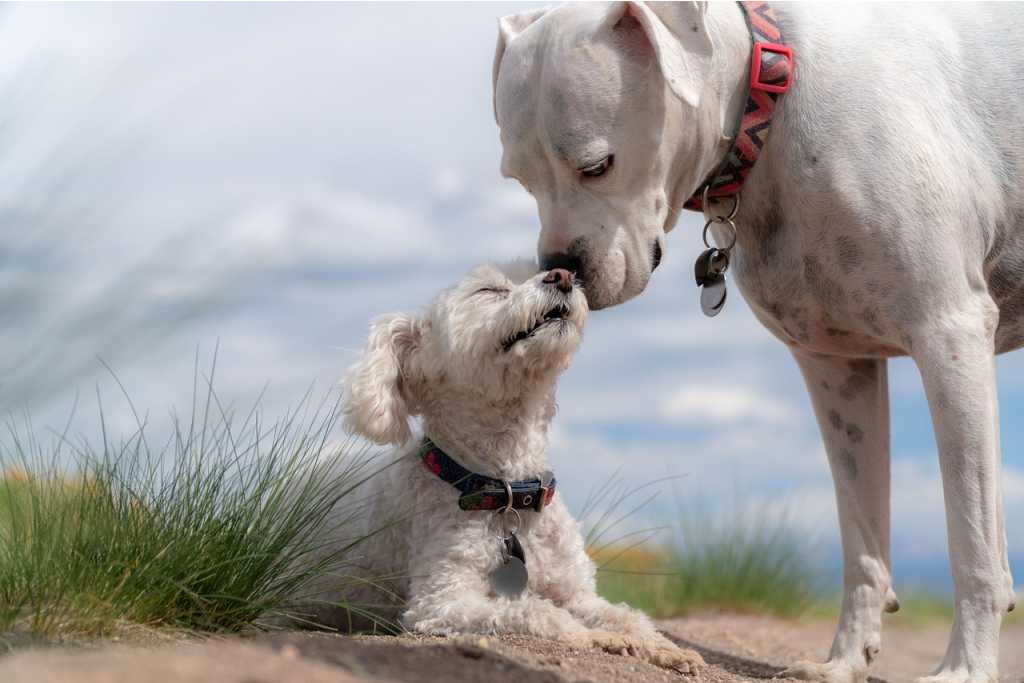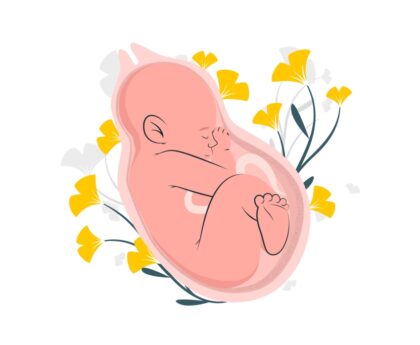Dog pregnancy can be an excellent time to care for your cherished pet. As pregnant humans, pregnant dogs go through hormonal, weight, hunger, and behavioural changes.
If you believe your dog might be pregnant, you should start looking out for indicators of dog pregnancy. Be ready to observe changes because many symptoms do not appear until almost a month has passed.
During this time, your dog will require more love and attention. Avoid forcing the pregnant dog to engage in vigorous activities, and be sure to speak with a veterinarian regarding pregnancy-safe drugs and diet.
Contents
What are the first signs of pregnancy in a dog?
The best source of information on dog pregnancy is your veterinarian, however the following explanation of indications, behaviours, and caring for pregnancy in dogs might be useful as well.
What are the Signs of the Initial Phase of Dog Pregnancy
Dog Pregnancy Symptoms: You can get ready to care for your pregnant dog by being aware of the canine pregnancy symptoms. Dogs can be covert about mating, so unless you are breeding, you might not be aware that you have a pregnant dog on your hands.

How long does it take to tell if a Dog is Pregnant?
About a month into the dog pregnancy, she will start to swell in the teat and have vaginal discharge. The abdomen of a pregnant dog may be a good indicator of pregnancy, depending on the breed and size of the animal. The pregnant dog’s abdomen often grows by 30 to 70 percent, but this may not be apparent until a few weeks before the dog gives birth.
The question of how long a dog is pregnant can be answered in a way by the symptoms of the initial phase. Dog pregnancy symptoms can be seen just after a month or 45 days (in some cases) of mating. See a veterinarian if your dog is exhibiting pregnancy symptoms. By using ultrasound, palpating the abdomen, and an endocrine test to identify hormones produced by pregnant dogs, a veterinarian can determine whether you have a pregnant dog.
Take a closer look at these pregnant dog symptoms
- Changes in Her Appetite
Your pregnant dog may not be eating as much as usual in the early stages of her pregnancy. Her appetite (and weight) will then start to grow around the midway point of the pregnancy. Several veterinarians in the USA advise keeping mom on puppy food while she is pregnant and nursing.
This guarantees your dog is receiving the proper nutrition. “And make sure your pregnant dog has access to plenty of food during those periods of increased demand. Dog mom diet must be healthy.”
- Changes in Energy Levels
Apart from dog pregnancy, the expectant dog may not have her normal vigor in the early stages of her pregnancy. Although many doctors advise against doing so, you could notice your dog moving less than she usually does.
- The Morning Pregnancy Sickness
Similar to human pregnancy, the changes in canine hormones that occur during early pregnancy can make your dog sick. See your veterinarian if the vomiting seems extreme or lasts for several days.
- Body Changes with Time
The nipples of a pregnant dog will change, becoming darker and more noticeable. They could also exude a murky liquid. Around days 32–45 of pregnancy, your dog will start gaining weight and you’ll start to see her protruding belly.
- Nest Building Habit
A dog typically gives birth (whelps) 64 to 68 days after conception. Your dog will hunt for a quiet, warm place to make a nest as her due date draws closer. If you find that your couch is lacking blankets or pillows, go around your home for hidden places, a lot of trash has been delivered to the floor of the closet.
When your dog pregnancy draws to a close, assist her in creating a space where she will feel secure and at ease. Many doctors advise placing a kiddie pool or similar enclosure out of the way of household traffic and prying eyes, and lining it with newspapers, old towels, or a blanket. “Dog mom will be able to get comfortable with this,”
Signs that your Dog is near the Labour
She is 58 days along
Like humans, some dogs may give birth a bit early or late. Dr. Dunham advises that you keep an eye on your dog’s behaviour until they reach 58 days as this is the full-term marker.
You should seek immediate veterinary care if labor has not begun after more than 70 days since breeding because this could be a sign that anything is wrong.
She is tense
You’ll probably know she’s in labor when you see her strain, says Doctor, because the second and third stages of labor are when the puppies start to be born. According to her explanation, a puppy is typically born every 45 to 60 minutes after which there is a 12 to 15-minute period of hard labor.
She is distant or clingy
Dogs go through terrible labor and childbirth, and each one reacts differently depending on their personalities. Pet doctor claims that some puppies will seek solace while others will become incredibly withdrawn. Offer her room and solitude if she wants to be alone, but be patient and show her a lot of love and attention if she prefers to spend more time with you.
She seems uncomfortable and restless
The majority of owners will initially observe behavioural changes in their pregnant dogs, even though the temperature is an obvious indicator. This typically manifests as pacing, panting, digging, or shivering. When these symptoms appear, according to Dunham, uterine contractions are probably just starting, and they normally last between six and 12 hours.
Her Body Temperature Plummeted
The rectal temperature of a dog dropping below 100 degrees Fahrenheit is one of the most obvious signals that she is going to give birth. When this occurs, according to Dunham, labor will very likely begin within 24 hours. An average adult dog’s body temperature is between 100 and 102.5 degrees, but as she gets ready to give birth, her body temperature will rise.
Taking care of a dog is not an easy task, it is just like giving birth by yourself. So it is recommended that you take proper measures before and after labor day, so you and your pet keep healthy and fine.





